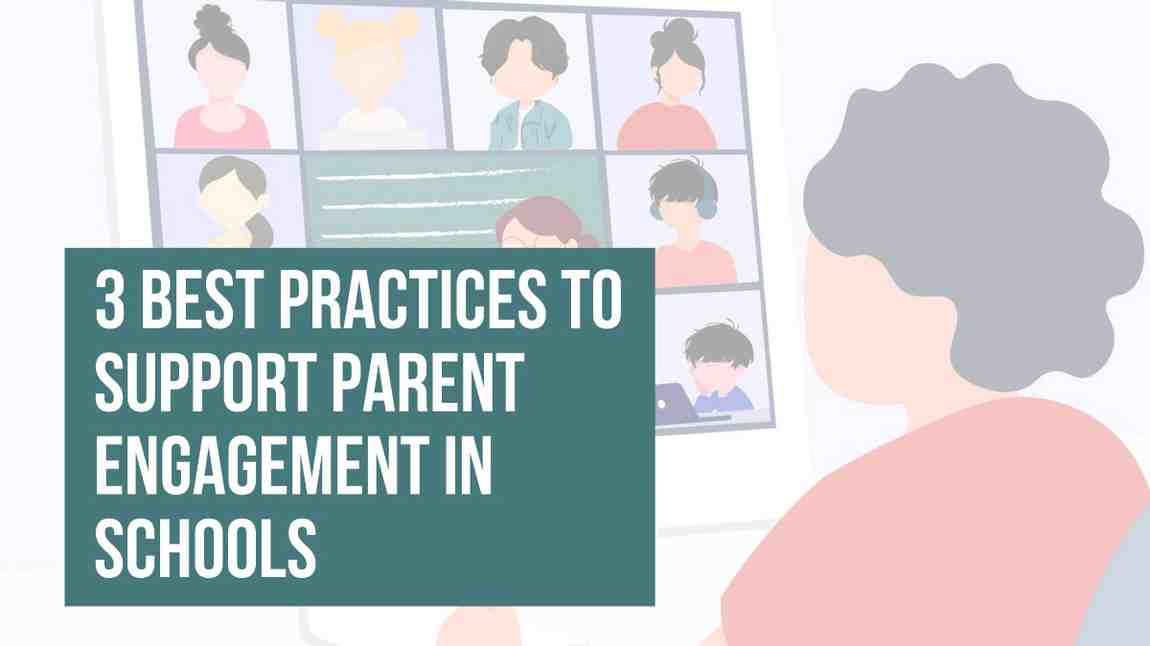10 Parent Engagement Strategies Every School Should Use

Want to enhance parent engagement in your school?
Parent participation is crucial to a student’s academic achievement. But schools now struggle more than ever to develop strong partnerships with families. From communication breakdowns to fragmented tools, it’s simple for even the most well-meaning efforts to end in failure.
In this blog, we’ll explore the challenges of parent-school communication and outline 10 actionable parent engagement strategies that foster trust, clarity, and better learning outcomes—powered by the right technology.
Why Improving Parental Engagement in Schools Matters?
The importance of parent engagement is also recognized at the policy level. India’s National Education Policy (NEP) 2020 calls for schools to actively involve parents and communities as partners in the learning process. The Ministry of Education has also released official Guidelines for Parent Participation in Home-based Learning to help schools and families collaborate more effectively.
Students perform better when schools and families work together. Research consistently shows that students with engaged parents:
- Perform better academically
- Attend school more regularly
- Develop stronger social skills
- Be more likely to pursue higher education
But the old standby tactics of involving parents—flyers, emails, and face-to-face meetings—are no longer sufficient. Today’s families are more mobile, diverse, and digitally interconnected than ever. Schools must shift, streamline, and individualize their communication to address contemporary expectations.
The Common Barriers to Parent Engagement
Even the most intent schools are confronted with serious obstacles when attempting to engage parents. Let us define the most frequent hindrances:
- Inaccessibility: Messages that function only on desktop or in a single language are easily overlooked.
- Too many tools: Students have an average of 8 teachers—and if each uses a different communications platform, parents get confused and disinterested.
- Broken or redundant messages: More than one message from multiple channels tends to confuse parents into not knowing what’s priority or what’s critical.
- Jargon overload: Not every parent is familiar with educational jargon or tech-speak spoken by teachers.
- Limited visibility: Lacking real-time information or feedback, most parents are unaware of their child’s on-the-spot learning journey.
10 Parent Engagement Strategies That Actually Work
These strategies can make it possible for schools to make communication easier, establish trust, and promote active parent involvement throughout the school year.
1. Pick One Unified Communication Tool
Begin by surveying how teachers are currently engaging with parents. Next, choose a single hub platform for all school-wide communication. When using the same tool, consistency increases and confusion decreases.
2. Share Briefer, More Regular Updates
Ditch the lengthy, monthly newsletter. Instead, go for a rhythm of brief, weekly updates that are timely and easy to consume.
3. Customize the Parent Experience
Parents do not all desire the same information. Allow families to sign up for the updates that are most important to them—such as academic, extra curriculars, or behavioral updates.
4. Set the Tone Early
In the initial weeks, invite teachers to personally introduce themselves, explain how and when they will communicate, and invite parents to inquire.
5. Focus on Relationship Building
Trust stems from strong relationships. Teachers must make the effort to meet parents, invite feedback, and stay accessible all year.
6. Share Accountability
Parent involvement is not solely a teacher responsibility. School leaders have to facilitate that all staff support clear, timely communication—and set the example.
7. Treat Parents as Partners
Make two-way communication experiences. Invite parents to provide information about their child’s learning style or home situation. This solidifies the learning partnership.
8. Empower Parents to Opt-In
Don’t bombard all parents with all updates. Allow them to select the communication methods and issues they are most interested in.
9. Offer Actionable Info
Don’t just tell—empower. Give tips on how parents can work with their child at home, assist with homework, or prepare for tests.
10. Share the Positives
Communication is not all about issues. Share student success, classroom victories, or school triumphs to foster goodwill and enthusiasm.
How Technology Enhances Parent Involvement
With digital innovation speeding up everywhere in education, the appropriate technology can eliminate many of the obstacles that hinder successful school-home communication.
Make Parent Access Simple
Rather than requiring parents to search across several apps or websites, provide one login portal through which they can view updates, calendars, feedback, and events.
Use Real-Time Data and Analytics
Platforms help parents get real-time updates about student performance, ensuring they remain engaged in the education process.
In contrast to Microsoft Teams or Google Classroom, which center around student-teacher engagement, a school LMS designed for this purpose exposes parents to learning progress, attendance, and areas of potential need.
Allow Personalized Messaging
Tools such as AlmaShines enable schools to communicate through SMS, email, app, and web—personalized, scheduled, and tracked messages. Parents are kept in the know, and schools get insights into participation levels.
Engage Alumni to Assist Student Decisions
Under India’s National Education Policy (NEP) 2020, students are urged to create their own learning trajectory. Yet many young students—and their parents—will require guidance.
Alumni engagement software can fill this gap by linking parents and students with alumni who can offer:
- Practical real-world guidance
- Academic and career mentorship
- Support in making informed decisions
Conclusion: Better Communication = Stronger Community
Enhancing parental engagement is not solely about shoving information around—it’s about developing sincere partnerships. By embracing easy, centralized methods of communication and leveraging the appropriate tools, schools can:
- Enhance trust and transparency
- Minimize confusion and overload
- Foster collaborative support among teachers and families
- Strengthen the whole school community
Want to Create a Smarter, More Connected School Community?
Begin by bringing your communication together and providing every parent with a clear path to connect.
Explore how your school can build a strong, tech-powered parent community.
Frequently Asked Questions (FAQs)
Parental engagement leads to better academic achievement, improved attendance, stronger social skills, and a higher likelihood of pursuing further education. It builds a strong bridge between home and school, enhancing student success.
School leaders, teachers, counselors, administrative staff, and even alumni play a role in promoting parent engagement. Successful efforts require coordinated communication and support across the entire school community.
Schools can engage parents in school health by communicating regularly about physical and mental health programs, offering parent workshops, involving them in health policy discussions, and sharing resources for healthy habits at home.
Schools can support parent engagement by offering multilingual communication, using mobile-friendly platforms, hosting inclusive school events, encouraging two-way feedback, and sharing actionable insights into student performance.
To improve family engagement, schools should develop a consistent communication strategy, personalize updates, involve families in decision-making, and offer tools that make participation accessible and meaningful for all types of families.
Engaging parents in school involves open communication, regular updates, celebrating student successes, hosting parent-teacher events, using alumni networks for mentorship, and encouraging feedback and participation in school initiatives.
Suggested Blogs
Let’s discuss the idea
Join hundreds of companies transforming their corporate communities with Almashines






